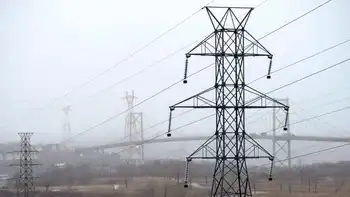AECL Signs Memorandum of Understanding with China and Argentina for CANDU Projects
By Canada News Wire
NFPA 70e Training
Our customized live online or in‑person group training can be delivered to your staff at your location.

- Live Online
- 6 hours Instructor-led
- Group Training Available
CNNC and NASA have also agreed to strengthen cooperation in sharing and exchanging their CANDU 6 nuclear power plant operational and maintenance experience. CNNC's Third Qinshan Nuclear Power Plant began full operation in 2003, while NASA's Embalse CANDU plant in Argentina has performed excellently for more than 24 years.
The signing ceremony in China was attended by Daniel Cameron, Argentina's Secretary of Energy, Eduardo Messi, President of NASA, Kang Rixin, President of CNNC, and Ken Petrunik, Chief Operating Officer of AECL.
During the meeting, the Argentinean delegation presented their country's active nuclear program, including the recent agreement between NASA and AECL to enter into commercial negotiations to build a new reactor similar to the Qinshan Phase III design.
"CNNC is happy with the very successful cooperation with AECL on the Qinshan Phase III CANDU project. It was completed nearly four months ahead of schedule and has operated very well since it went into full service," said Kang Rixin, of CNNC, China's most comprehensive and largest nuclear power corporation. "Working closely with the two other parties, CNNC is interested in exploring cooperative efforts regarding various aspects of future CANDU projects, such as the new build in Argentina."
AECL's Ken Petrunik stated, "CANDU reactors as built in Argentina and China are not only among the best performing proven designs, but also have the lowest uranium consumption per terawatt hour. We are happy to see enhanced international cooperation with great partners such as NASA and CNNC to jointly promote the further deployment and development of this efficient technology to meet increasing international demands and sustainable development of nuclear power."
Argentina's nuclear power program is centred on heavy water reactors owned and operated by NASA. There are currently two operating reactors in the country: Atucha-1, a 300 megawatt (MWe) net pressure heavy water reactor (PHWR) of the pressure vessel type, supplied by Germany and in operation since 1974; and Embalse, a CANDU 6 power reactor designed and supplied by AECL that was connected to the grid in 1983. NASA has implemented a proactive nuclear program, including plans to extend the life of the Embalse CANDU 6 power plant, build a new CANDU station, and complete Atucha-2, a second heavy water reactor of 700 MWe, originally supplied by Germany.











